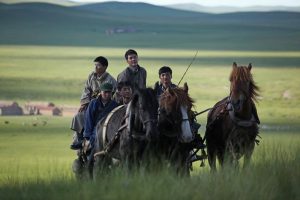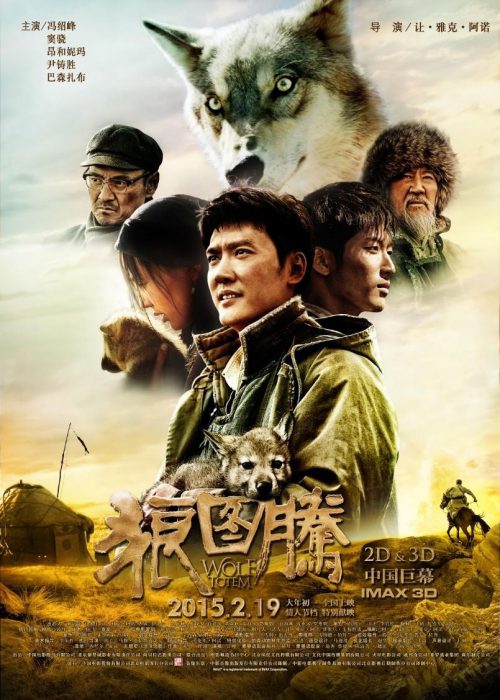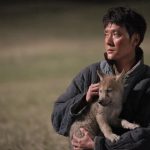Dogs are man’s best friend, wolves are wild carnivorous animals. What happens when one man decides that wolves are so much more?
With majestic takes of the Mongolian landscape and actual, painstakingly trained wolves, Wolf Totem offers stunning visuals to its viewers, setting the grounds for a bloody tale of man vs. beast that begins when migrating settlers from the South invade the territory of the mighty wolves of the North.
Chen Zhen (Shaofeng Feng), a young man from Beijing, is sent to Inner Mongolia to become a shepherd among the nomads and is tasked to teach Chinese to the local population. Set during the Cultural Revolution in China in the 1960s, it offers a view on the effects the revolution had to the ethnic minorities in the country.

Bilig, the leader of the nomads, takes Chen Zhen, a scholar and educator, to look at how a pack of wolves ambushes a herd of gazelles, and notes that it is by watching these wolves that Genghis Khan was able to learn how to successfully reign over his enemies. He then takes Chen Zhen to a frozen lake where the Chinese man sees the aftermath of the ambush; gazelles trapped in the ice for wolf pups to feed on in the future, the nomads also take some of the frozen gazelles, but leave most to the wolves. Chen Zhen sees the importance of the wolves in the ecosystem of the grasslands, and how the Mongols integrate themselves into this system without upsetting the balance of the environment. But with educators come political party leaders bent on tipping the fragile scale the nomads respected to suit human needs without thinking of the long-term side effects of their decision.
These long term side effects were barely explored, however. Perhaps it was the timeline of the film that was the reason for its failure to expound on the environmental consequences it had attempted to show. After all, most of the long term side-effects of the cultural revolution were experienced after said revolution. The environmental moral that should have captured the viewers’ emotions just never seemed to reveal itself to its full extent. Furthermore, the wolves, who were supposedly the star beasts of the film, were never given ample screen time to show off wolf dynamics for the audience to sympathize with. The conspicuous lack of “wolf-only” scenes failed to help the audience successfully form a connection with the pack to give a better understanding of why the Mongols greatly respected these fascinating beasts.
The fragile yet strong relationship between man and dog, a concept that most people empathize with as dogs are universally known as man’s best friend, was touched upon by the film when Chen Zhen decided to save a wolf pup from being killed. But it was ultimately disappointing because there was hardly any development between the relationship of the two characters, with the protagonist himself lacking in many aspects when it comes to understanding wolves since he was born and raised in the city. There is one emotional development that the film need not explore but did anyways—romance. The element was explored too late into the storyline. It seemed as though it was only added at the last second to give the protagonist closer ties with the nomads, unnecessarily so considering Bilig treats Chen Zhen like a son.
All things considered, the cinematics of the film were spectacular, in particular the flight of the gazelles, with the scene being shot overhead by camera drones to give viewers the full thrill of the chase. As was the sequence where the wolves, driven by hunger, ambushed the horses of the herdsmen during a severe snowstorm, again all shot with cameras with no computer graphics needed. The cinematographers certainly showed that not everything has to be computer-generated, that there are some things only a camera can fully capture.
Overall, if you enjoy watching nature in all its beauty, with vast grasslands and crystal clear lakes all untouched by mankind, and cinematics that do not rely on CG effects, then this film takes the cake. Just be wary of how predictable the story can be.
For more information about the event and its featured films, follow the Spring Film Festival on Facebook!
Written by Jeamille Chan






